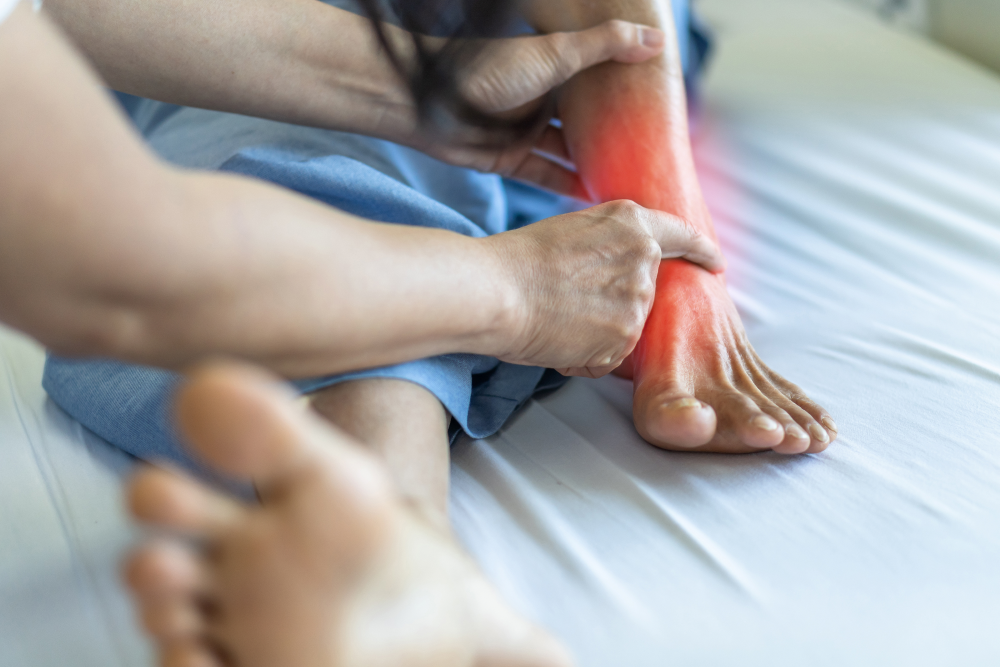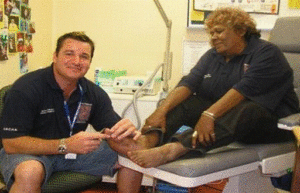

Director of Griffith’s (FPHU), , has contributed decades of knowledge to the podiatry profession and culturally safe care to help develop ³Ô¹ÏÍøÕ¾ guidelines for diabetes-related foot disease (DFD).
Driven and delivered by (DFA), the guidelines are the first in more than a decade and have been endorsed by 10 national peak bodies.
“This is the first time that any guideline has included considerations for Aboriginal and Torres Strait Islander peoples, and that was my reason for being involved,” Professor Charles said.
“It was a lot of hard work from a really committed team to produce the six guidelines, and it was a very long process, but it was great to be part of their development.”
Ninety-eight recommendations were made across six new guidelines for the general medical audience, as summarised from The Medical Journal of Australia:
- Prevention – screening, education, self-care, footwear, and treatments to prevent diabetic foot disease
- Classification – classifications systems for ulcers, infection, ischaemia and auditing;
- peripheral artery disease – examinations and imaging for diagnosis, severity classification, and treatments
- Infection – examinations, cultures, imaging and inflammatory markers for diagnosis, severity classification, and treatments
- Offloading – pressure offloading treatments for different ulcer types and locations; and
- Wound healing – debridement, wound dressing selection

Whilst DFD is a primary cause for hospitalisations, disabilities and medical costs across the population, the incidence of disease is 2.3 times higher for Aboriginal and Torres Strait Islander peoples.
Professor Charles said that a scarcity of preventative footcare services for Aboriginal and Torres Strait Islander communities had contributed to the surge of diabetes-related issues.
“As well as a far greater risk of DFD, Aboriginal people face a 38-fold increase in the rate of amputation,” he said.
“Ongoing distrust in healthcare systems stemming from institutional and historical racism as well as lack of culturally safe healthcare frameworks involving the voices of Aboriginal and Torres Strait Islander peoples has contributed to poor outcomes in foot health.”
“The new guidelines developed by the DFA were the first to recognise that Aboriginal and Torres Strait Islander experts must be involved in developing guideline policy in foot health.”
The refreshed guidelines include a new ‘risk stratification system’ for screening those without diabetes-related foot disease.
Particularly for those deemed higher risk, the system suggests more specific self-monitoring, footwear prescription, surgical treatments, and activity management practices.
Thanks to Professor Charles’ contributions, the Prevention Guidelines supplied by the DFA included recommendations for all individuals with the addition of considerations for Aboriginal and Torres Strait Islander peoples.
One recommendation states: “Examine a person with diabetes at very low risk of foot ulceration (IWGDF risk 0) annually for signs or symptoms of loss of protective sensation and peripheral artery disease, to determine if they are at increased risk for foot ulceration.”

However, Professor Charles noted in the considerations that Aboriginal and Torres Strait Islander populations in rural and remote areas of Australia may not be able to access such routine screening due to a lack of services or factors such as seasonal movement.
“Due to potential limited access, movement and cultural practices, greater severity of diabetes, and greater risk of complications of some Aboriginal and Torres Strait Islander people, health professionals may also consider opportunistic screening and/or more frequent screening,” he said.
“I am especially proud to be involved with this inclusive set of guidelines which has the potential to contribute to ‘Closing the Gap’ in Aboriginal and Torres Strait Islander foot health.”
Research informing the guidelines showed culturally appropriate screening and intervention programs as well as improved access to effective healthcare services were necessary to prevent growing disparities in DFD complications between Aboriginal and Torres Strait Islander peoples and non-Indigenous Australians.








